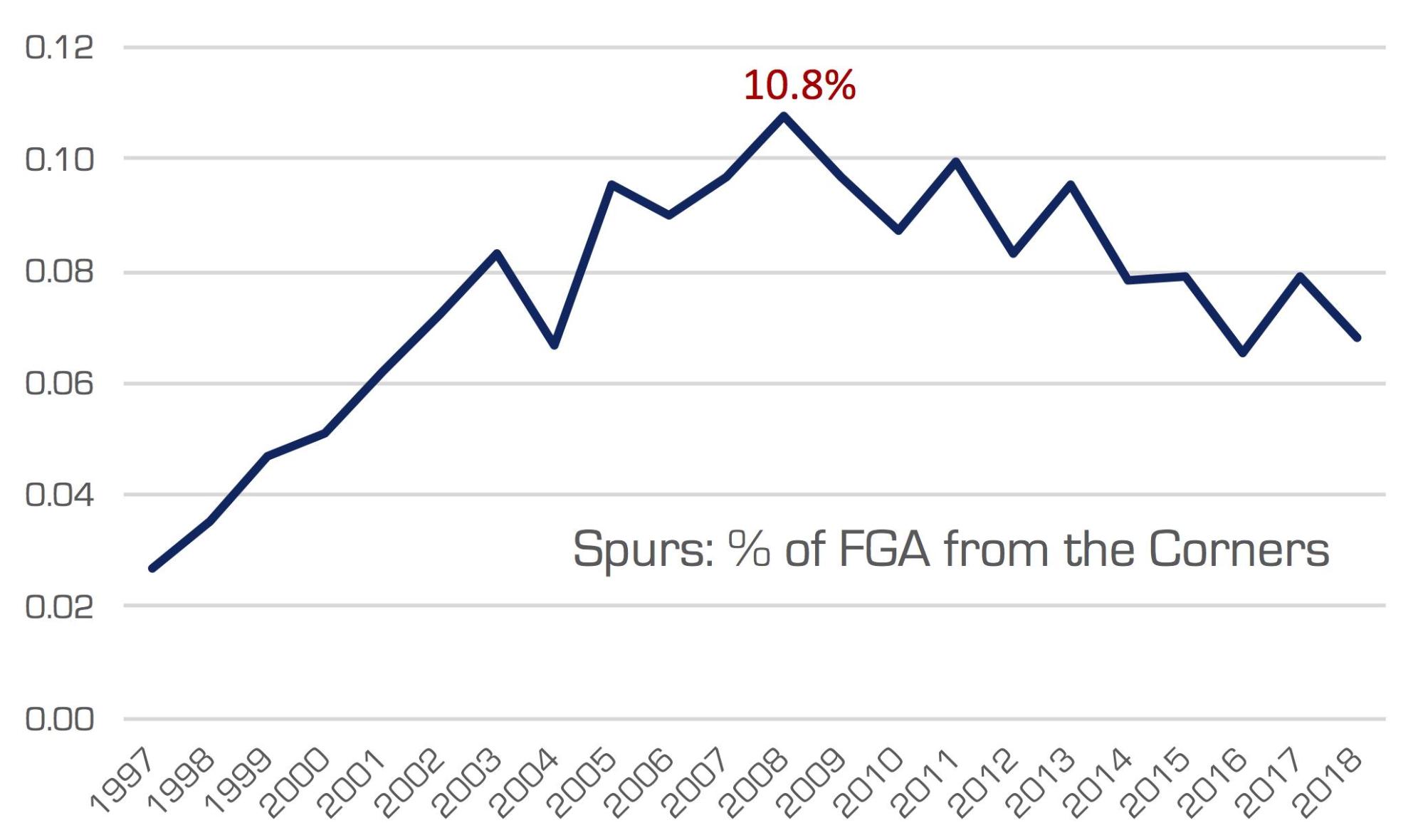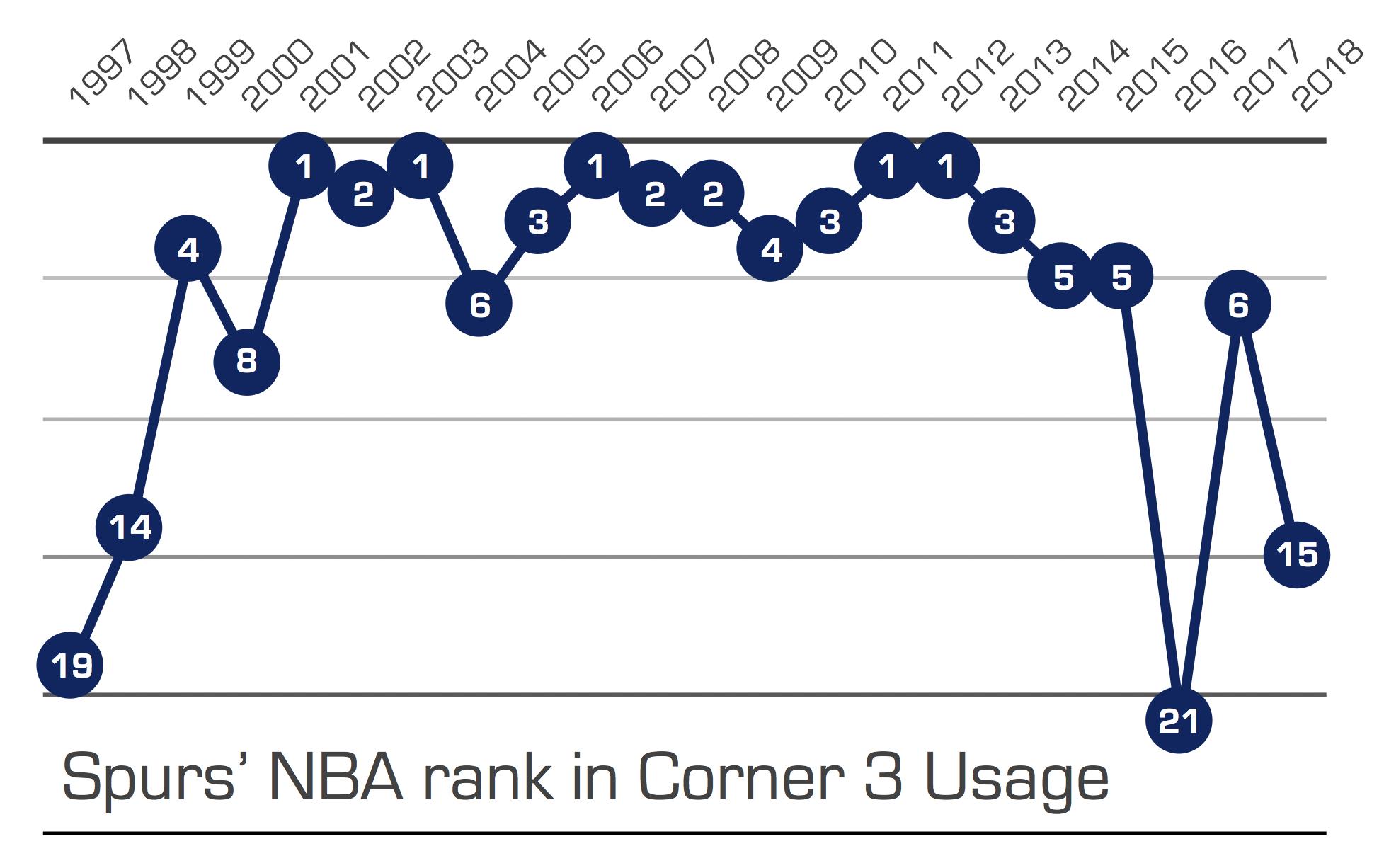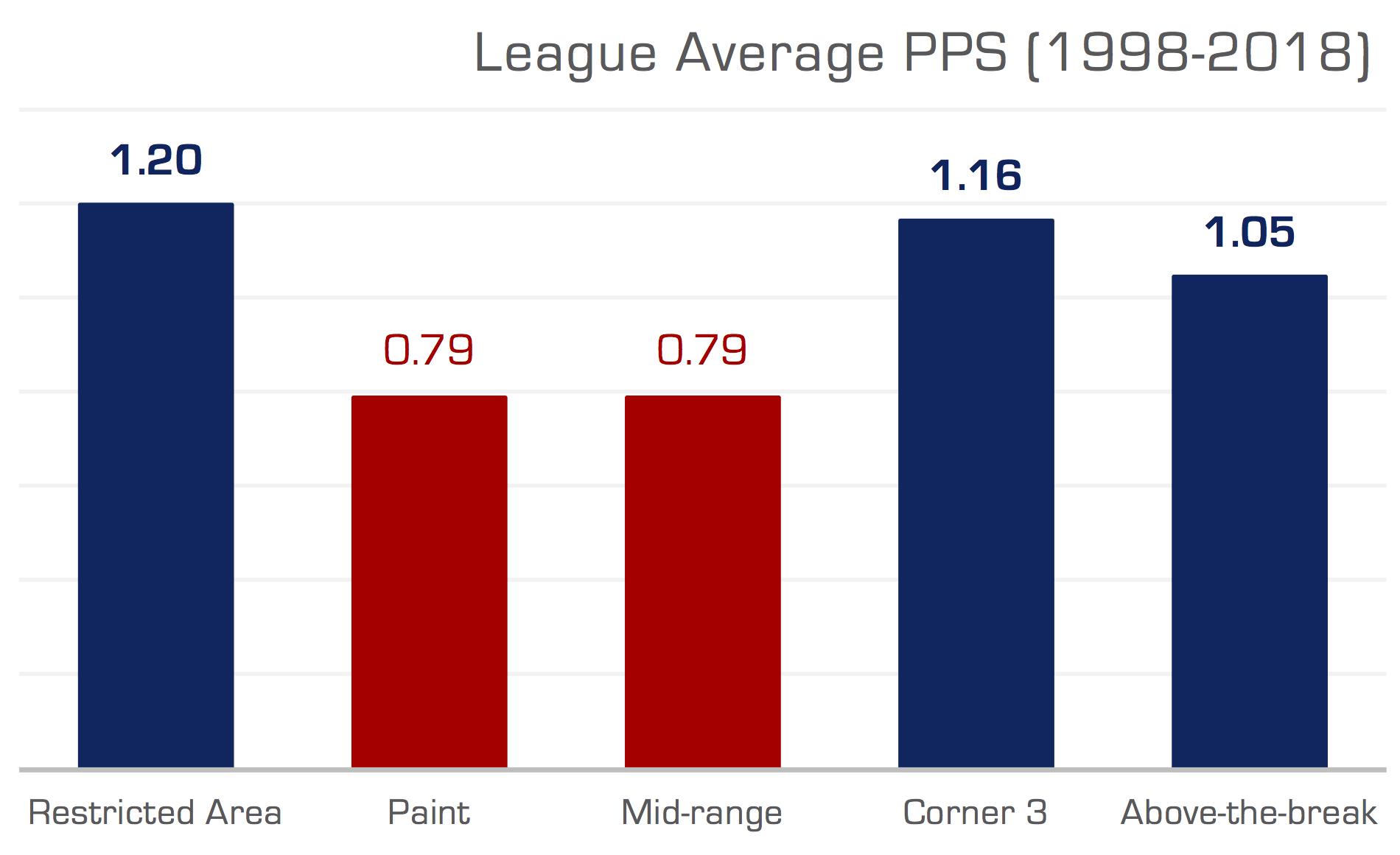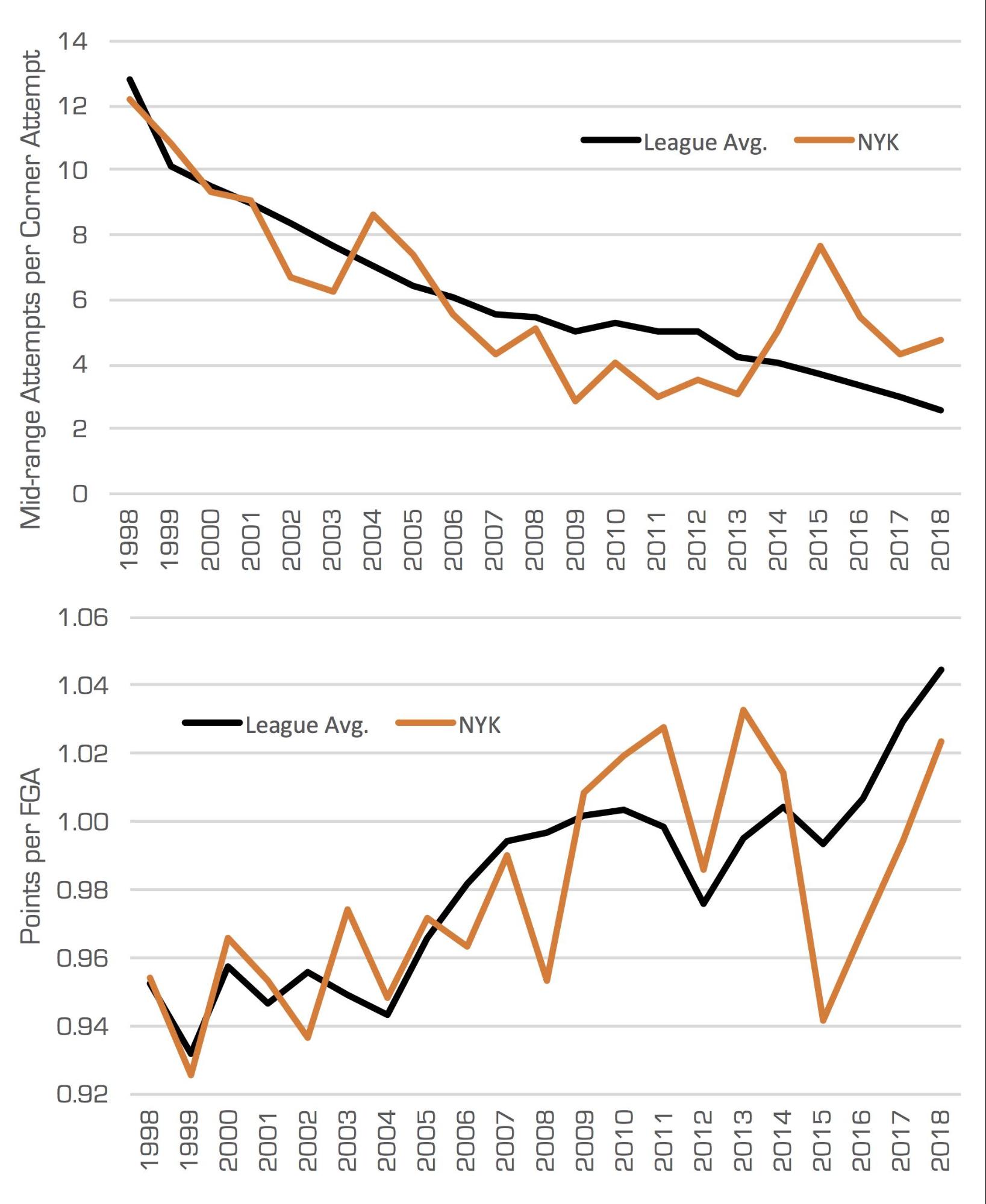The Corner 3
![]()
Between 1999 and 2014, the San Antonio Spurs won 5 NBA Championships and were a combined 894-370 (a Win% of 71%) in regular seasons. When teams are this dominant, it’s common to credit the individuals on the roster.
It takes a lot of talent to be good in the NBA, and those Spurs teams were loaded. But, there are many talented teams that never achieve that level of greatness. To win in the NBA, it takes talent and a good system.
Good systems require good shot selection, and a key component of shot selection is the corner 3.
In 1998-99, corner 3s were just 3.6% of FGA in the NBA. Some teams almost never took them. The Hawks only took 61 in that shortened season for an average of 1.2 a game. They only made 19 or about 1 for every 3 games. But for the Spurs, the corner was already an important part of the offense.
In 1998-99, 4.7% of the Spurs’ FGA came from the corners. That number grew to 5.1% the next year and 6.2% the year after. It grew until it peaked at 10.8% in 2007-08. At that point, the Spurs were taking corner 3s about twice as often as other teams.

Effective use of the corner 3 requires not just taking the shot, but making it. Define corner 3 usage as made corner 3s divided by FGA. (We divide by FGA to adjust for team pace and to account for shortened seasons.) For more than a decade, the Spurs were regularly in the top 3 in corner 3 usage.

The Spurs’ corner 3 usage hasn’t been so special in recent years. It’s not that the Spurs’ usage has regressed so much. Instead, through analytics, the rest of the NBA has caught on to what was the Spurs’ secret.
What’s so special about the corner 3? It’s the second most efficient zone on the court. Besides shots at the hoop, the corners provide the best bang for your buck.

If a team could replace 10 mid-range jumpers with 10 corner 3 attempts, they’d be projected to score an additional 3.7 points per game. That might not sound like a lot, but everything else the same, an additional 3.7 points per game projects to an additional 9.7 wins on the NBA season.
Every teams wants more shots at the hoop, but those are hard to come by. Evolving shot selection often means replacing mid-range jumpers for 3-point attempts. The best offenses are able to replace mid-range attempts with corner 3s. Thus, the ratio of a team’s mid-range attempts to corner 3s can be a good approximation of the team’s shot selection and the extent to which the organization has evolved with the modern game.
Teams that take less mid-range jumpers for every corner 3 tend to be much more efficient. In the last 22 seasons, 203 teams have taken at least 8 mid-range attempts for every corner 3. Only 8 of those 203 teams (3.9%) averaged over 1 point per FGA. 174 teams averaged no more than 4 mid-range jumpers for every corner 3. 129 of those (74.1%) averaged more than 1 point per FGA.

Jerry Sloan’s Utah teams were the efficient outliers at the end of the ‘90s. They took plenty of mid-range attempts while averaging more than 1.02 points per FGA. But those teams wouldn’t be efficient by today’s standards. The 1996-97 Jazz averaged 1.03 points per shot. That led the NBA that season. In 2017-18, that would have been good enough for 17th in the NBA, about what the Brooklyn Nets averaged.
Over time, NBA teams have evolved to take less mid-range jumpers and more corner 3s. However, several teams have hit a few bumps along the way. In 2014-15, the Knicks decided to abandon modern shot selection trends and revert to a style more prevalent in the ‘90s. In doing so, their offensive efficiency plummeted and the team won a measly 17 games.
(The move did net them the 4th overall selection in the 2015 draft, which turned out to be Kristaps Porzingis!)

The NBA is in the midst of a 3-point revolution, and every team is looking to stock its roster with better perimeter shooters. The trouble is that basketball still requires other skills besides shooting, namely defense, and some of the best defenders aren’t great perimeter shooters.
When running an NBA play, a team should strive to put all five players in a position on the court where they are a threat. In this way, there is a cost any time the opponent leaves a man open to help.
But when a lineup features those players with elite defensive skills that aren’t great offensive players, where can the offense hide them? Some teams have found success placing these players in the corners.
In the three seasons before Al-Farouq Aminu joined the Trail Blazers, he shot 30/114 for 26.3% from 3. In his first season in Portland (2015-16) he was 126/349 for 36.1%. He shot and made way more 3s than he had previously in his career.
A big part of Aminu’s emergence as a 3-point threat was his regular positioning in the corners. He was 57/145 from the corners for 39.3%. Elsewhere on the court, Aminu could be seen as an offensive liability, but in the corners, he was incredibly dangerous and a player teams had to think twice about leaving open.
The corner 3 has played a special role in basketball’s 3-point revolution. Once an afterthought in an NBA offense, it’s now a major component of the new game. It gave San Antonio an edge before other teams caught on. Now, it’s usage is an indicator of the extent to which an organization’s play has evolved, and the most progressive teams are finding that otherwise average or below-average offensive players can pose a threat from the corners. Today’s offenses and defenses would be wise to respect the utility of the corner 3.
